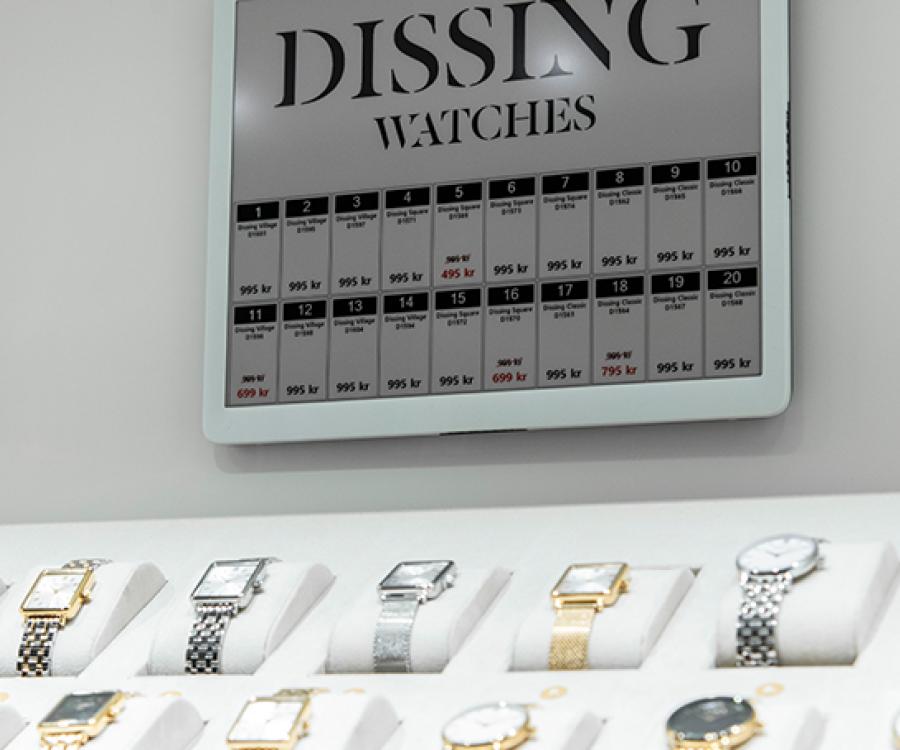
Price labeling with radio-controlled electronic labels provides correct pricing information at the shelf and the checkout in a matter of seconds. Guillaume Portier of the French manufacturer SES emphasizes that this makes changing prices much easier to do than with paper price tags. He is convinced that not just retail, but also customers benefit from electronic shelf labeling (ESL).
What are the principal problems of price integrity between shelf edge and POS scanner?
The increasing frequency of price changes is a significant trend in the retail sector worldwide. It has doubled over the last 5 years. This has led to a growing number of pricing errors, which in turn has had numerous consequences: First, there are falling profits due to pricing errors, delays in displaying price increases or delays in returning to pre-promotion prices. Not to forget these consequences: financial penalties, gestures of goodwill to appease complaining customers, etc. The use of electronic shelf labels dramatically reduces this fall in profits – by around 90 percent.
What has to be changed to equip a supermarket with ESL?
The implementation of our product offering is almost a “plug and play” solution. Some very little changes are needed within the store to install our system.
What is the lifetime of ESL-labels? Will batteries need to be changed?
Our ESL is designed to support five years of intensive use. The labels are also changeable thanks to their battery compartment.
How did prices develop in electronic shelf labeling over the past few years?
We faced constant and high-level competition that benefits our customers.
Introducing ESL: Do retailers start with small black and white labels? Who chooses larger displays, color and graphics?
At this stage, we struggle with constraints like extra low consumption – 5-year battery life –, high reflection, maximum readability and cost effectiveness to provide a better ESL price. That’s why our offering is still in black and white technology. The larger displays are designed for specific aisles or specific goods like fruits & vegetables. Our product range is the broadest of the market by covering LCD TN, LCD TFT and EPAPER .
How does ESL improve shelf availability?
The operational management data displayed at the shelf edge provides retailers with direct information on inventory levels, restocking rates, minimum orders and facings. They are perfect tools to better manage a store.
Do you have some data on time savings at the checkout due to ESL?
As ESLs reduce pricing errors they also reduce customer complaints at the point of sale. This has a direct and concrete effect at the checkout.
Let's talk about Return on Investment (ROI). Which retailers benefit the most? What factors influence the time until ROI is reached?
ROI is based on cost reduction. First, there are labor costs for creating labels, price changes – often several thousand per week – and for promotions. We reduce price checks at the shelf edge and complaint management due to price discrepancies. Secondly, cost reduction is the cost of paper and of printing the labels. Electronic shelf labeling cuts these costs by more than 80 percent.
Overall, SES customers save over 60 percent by replacing their paper labels with electronic shelf labels. These quantifiable advantages come with a number of other benefits, which are more difficult to measure but which weigh just as heavily in a retailer's decision to invest: ESL allows a more dynamic and responsive pricing policy. ESL raises client satisfaction and brand loyalty and ESL provides an image of modernity.
Displays are getting larger so they can show data for the staff. Is this necessary? Managers or employees can get all information and do all changes by mobile devices.
Stores ask for perfect synchronization between back office, front office and shelves. The more data you can make available, the more effective the system is. Mobile devices allow the staff to supervise the whole system while being at the back office or in the store. Therefore equipping the entire staff with mobile devices can require a significant hardware investment. That’s why the entire store is usually switched to the management screen before store opening. Employees can see information directly at each product, without having to scan items or go through menus on their handheld devices.
You tout precision marketing to be improved by ESL. Can you explain this?
The “accurate marketing” features a trait that takes the diversity of consumer expectations and generalized strategies of segmentation or differentiation into account. With SES NFC electronic tags – which is our latest innovation – the service provided to the customer by the store is customizable because its profile is recognized. Thus identified, the clients can be guided and supported in their purchases.
Which new services are possible with ESL?
Retailers can provide greater wealth of product information. They can give advice, present recipes, etc. Important things are health warnings, lists of ingredients and allergens. ESL is suited for customized special offers and promotions. ESL can present shopping lists by presenting other products that fit well with an item. Displaying a bar code, ESL enables self-scanning with a Smartphone.
Together with Wincor Nixdorf you're going to equip 270 Simply Market supermarkets in France. How did you get the order?
Wincor & SES have been partners for 10 years. They demonstrated that the system, which has already been installed in Auchan's 117 hypermarkets matches perfectly well with their expectations.
Interview by René Schellbach, iXtenso.com









